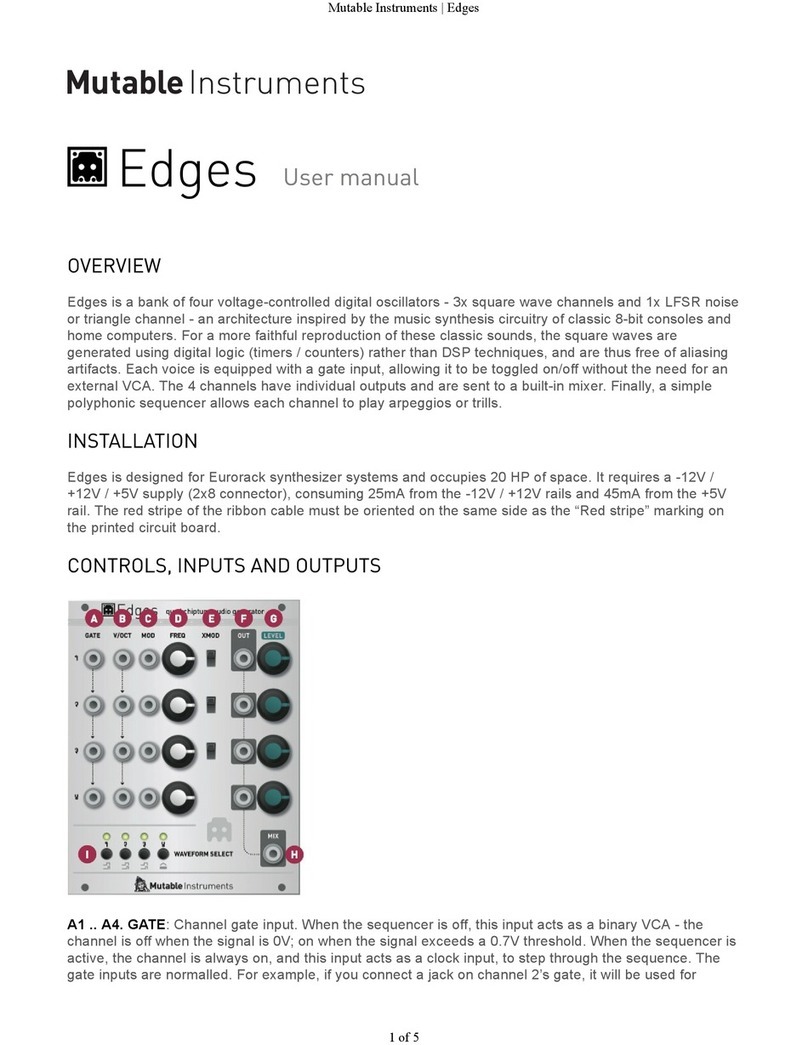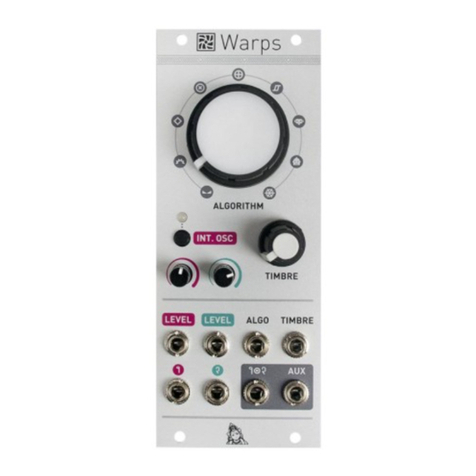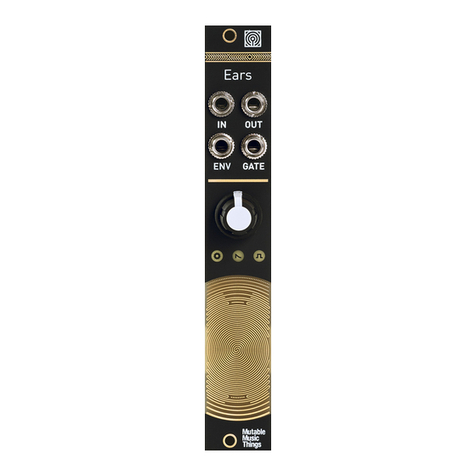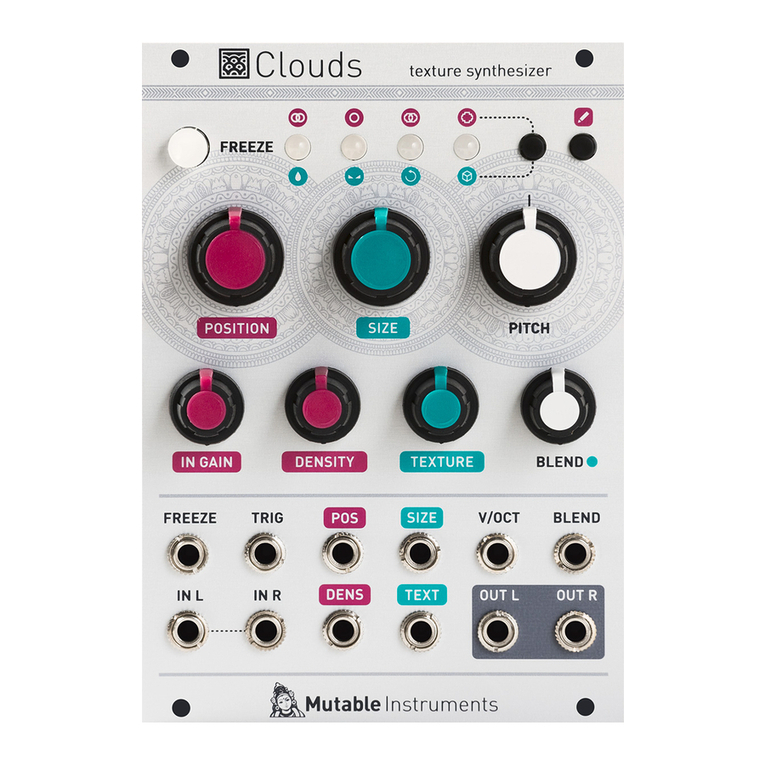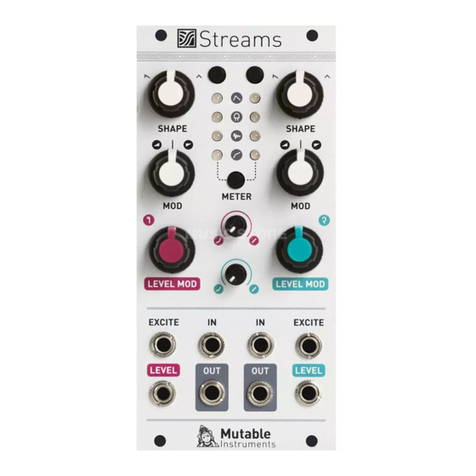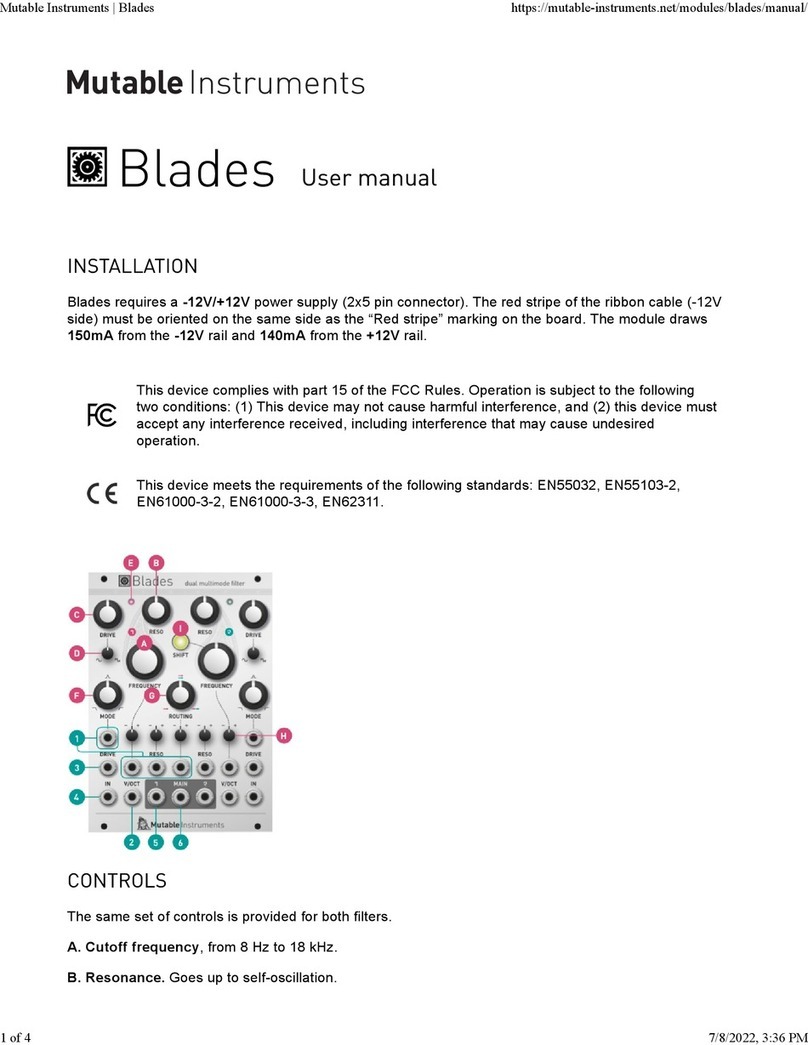
exercise is to recreate the classic THX sound with a random source and a VCA.
Send a very fast sequence of 3 or 4 notes to the V/O input, so that each grain (if sown randomly) randomly
picks one of those notes. The result? A chord!
Experiment with capturing many small fragments of sound by sending short pulses to FREEZE while a
complex patch is being played through the audio input!
The module is factory-calibrated using precision voltage sources. Follow this procedure only if you
want to compensate for inaccuracies in your CV sources, or if your module has lost its calibration
settings following a fault or the installation of alternative firmware.
To calibrate the unit:
Disconnect all CV inputs.1.
Connect the note CV output of a well-calibrated keyboard interface or MIDI-CV converter to the V/OCT input.2.
Press the Load/save button, and while you hold it down, press the Blend parameter/Audio quality button.
The first 2 LEDs will blink in orange.
3.
Play a C2 note, or send a 1V voltage from your CV source.4.
Press the Load/Save button. The four LEDs will blink in orange.5.
Play a C4 note, or send a 3V voltage from your CV source.6.
Press the Load/Save push-button.7.
Calibration is done!8.
Unplug all CV inputs/outputs from the module. Connect the output of your audio interface/sound card to
the IN L input. Power on your modular system with the FREEZE push-button pressed. The FREEZE LED
will blink.
Make sure that no additional sound (such as email notification sounds, background music etc.) from your
computer will be played during the procedure. Make sure that your speakers/monitors are not connected
to your audio interface - the noises emitted during the procedure are aggressive and can harm your
hearing. On non-studio audio equipment (for example the line output from a desktop computer), you might
have to turn up the volume to the maximum.
When you are all set, play the firmware update file into the module. While the module receives data, the
bargraph will show the signal level. Signal reception is optimal when two or three LEDs are lit. You can
use the IN GAIN knob to boost or reduce the gain. When the end of the audio file is reached, the module
automatically restarts - if it is not the case, please retry the procedure.
In case the signal level is too weak, the LEDs will blink in red. Press the FREEZE push-button and retry
with a higher gain. If this does not help, please retry the procedure from another computer/audio interface,
and make sure that no piece of equipment (equalizer, FX processor) is inserted in the signal chain.
In its tumultuous teenage years, Clouds tried to be everything, including a delay/pitch-shifter, a spectral
processor, a projectionist and a cab driver in Rouen. This experimental code is still available in the
module, by pressing the B button for 5 seconds until one of the LEDs glows in orange, and then
repeatedly pressing the button to select one of 4 functions:
(First LED lit) Granular processor (normal operation).
(Second LED lit) Pitch shifter/time-stretcher.
(Third LED lit) Looping delay.
Mutable Instruments | Clouds
5 of 7

